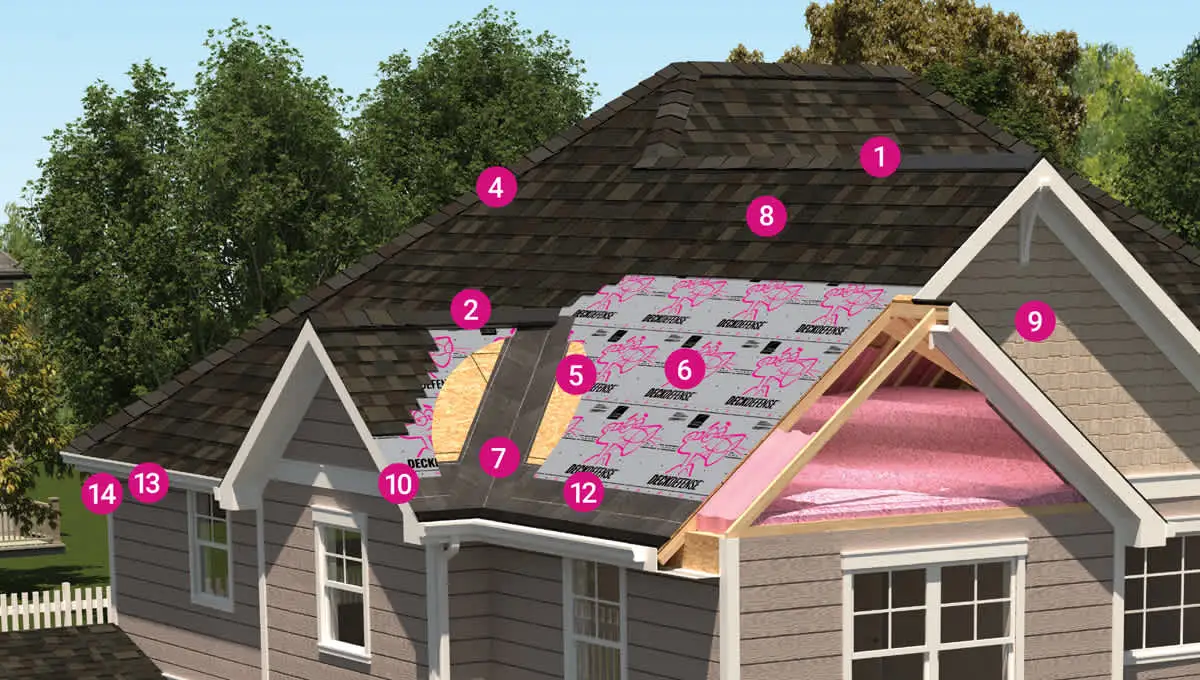A building’s roof provides protection from the elements and contributes to its structural integrity and energy efficiency. When installing or replacing a roof, one common question arises: how many layers can be added to the roof structure? In this article, we’ll explore the factors determining the number of layers that can be applied to a roof, the pros and cons of multiple roofing layers, and important considerations for homeowners and contractors.
1. Understanding Roofing Layers:

Roofing layers refer to the components of a roof system, including underlayment, roofing material, and any additional layers, such as insulation or membrane roofing. The number of layers on a roof can vary depending on factors such as the type of roofing material used, local building codes and regulations, and the existing roof’s condition.
2. Factors That Determine the Number of Layers:
- Building Codes and Regulations: Local building codes and regulations often dictate the maximum number of roofing layers allowed on a property. These codes are designed to ensure buildings’ safety and structural integrity and may vary depending on the location and type of structure.
- Structural Considerations: The structural integrity of the roof and the underlying support system must be considered when determining the number of roofing layers. If not adequately addressed, adding excessive weight to the roof structure can lead to structural issues, such as sagging or collapse.
- Type of Roofing Material: Different roofing materials have varying weights and properties, affecting the number of layers that can be safely applied. For example, lightweight materials such as asphalt shingles may allow for more layers than slate or concrete tiles.
- Condition of the Existing Roof: The existing roof’s condition plays a significant role in determining whether additional layers can be added. If the existing roof is in poor condition, has structural deficiencies, or has multiple layers already in place, removing some or all of the existing layers may be necessary before installing new roofing material.
3. Pros and Cons of Multiple Roofing Layers:
a. Pros:
- Cost Savings: Adding a new layer of roofing material over an existing roof can be more cost-effective than completely removing and replacing the roof. This can save on labor and disposal costs associated with tear-off and disposal of old roofing materials.
- Increased Insulation: Additional roofing layers can provide added insulation and improve energy efficiency, helping to reduce heating and cooling costs.
- Enhanced Protection: Multiple layers of roofing material can provide extra protection against leaks, wind damage, and other environmental factors.
b. Cons:
- Weight: Adding multiple layers of roofing material can significantly increase the weight load on the roof structure, potentially leading to structural issues if not properly supported.
- Reduced Longevity: A roof’s lifespan may be shortened when multiple layers are added, as the additional weight and stress can accelerate the wear and deterioration of the roofing materials.
- Installation Challenges: Installing multiple layers of roofing material requires careful planning and expertise to ensure proper adhesion, waterproofing, and ventilation. Improper installation can lead to moisture buildup, mold growth, and premature roof failure.
4. Important Considerations for Homeowners and Contractors:
- Building Codes and Regulations: Ensure compliance with local building codes and regulations regarding the maximum number of roofing layers allowed. Obtain necessary permits and approvals before beginning any roofing work.
- Structural Assessment: Conduct a thorough structural assessment of the roof and underlying support system to determine its capacity to support additional layers. Consult a structural engineer if necessary to assess load-bearing capacity and structural integrity.
- Quality of Existing Roof: Evaluate the existing roof’s condition to determine whether it is suitable for adding additional layers. If the existing roof is damaged, deteriorated, or has multiple layers already in place, it may be more cost-effective to remove the old roofing material and start fresh.
- Professional Installation: Hire qualified roofing contractors with experience installing multiple roofing material layers. Ensure proper installation techniques and materials are used to prevent leaks, moisture buildup, and premature roof failure.
- Long-Term Maintenance: Consider the long-term maintenance requirements and costs of maintaining a roof with multiple layers. Regular inspections, maintenance, and repairs may be necessary to ensure the continued performance and longevity of the roof.




